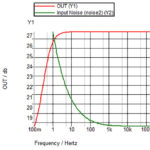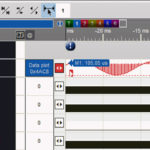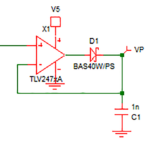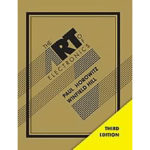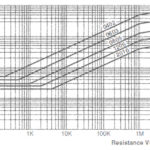The world is full of MOSFETs — they are the cornerstone of most ICs. However, the humble JFET still exists, although it is a bit of a niche market now and not always easy to find. Vishay, who took over the Siliconix brand many years ago, seem to have dropped JFETs now, although Siliconix was one […]
Breathing new life into an old oscilloscope
My current oscilloscope is a four-channel, high-speed, deep memory instrument which is still good for analog work in spite of its age. Newer analog oscilloscopes often have mixed signal options with eight or more digital channels. Even for an analog engineer, these can be useful as you can often be working with ADCs, DACs or […]
Minimizing Mister Miller in transistors
I briefly mentioned the Miller effect in an earlier blog on cascode amplifiers but thought it was worthy of a more detailed discussion. The Miller effect or Miller capacitance was first published by John M Miller in 1920 – “Dependence of the input impedance of a three-electrode vacuum tube upon the load in the plate […]
The perils of peak detects
My previous blog touched on peak detect circuits. What seems simple in principle can be quite problematic if you want speed and accuracy. A diode and a capacitor makes a crude peak detect but the voltage drop of the diode makes it a poor choice so you will normally add an opamp to improve accuracy. […]
Pulse signal processing: what to watch out for
A number of systems I have developed have required the processing of pulsed analog signals. Depending on the system, one or more attributes of the signal needed to be preserved and measured such as pulse height, pulse width, pulse shape and pulse position in time. Also, you usually need some gain to boost the signal […]
The Art of Electronics
In 1980, the book “The Art of Electronics” was published, written by Paul Horowitz and Winfield Hill. For many people, myself included, it became the first book you picked up when you needed to know anything related to analog electronics. It was intended as a course textbook but became a designers reference book for many […]
What’s your type? Walk-thru of semiconductor diodes
There are quite a few different types of semiconductor diode from junction diodes, Schottky diodes, Zener diodes etc. You need to know the difference between them in order to select one. A good place to start the description of the types would be a comparison of a conventional PN junction diode and a fast recovery […]
Know your group delay and phase shifts
You may or may not have thought about group delays in your electronics signal processing chain, but it is almost certainly there. It may not matter that it is there, but you need to be aware just in case. One way in which it might affect you is if you are sampling a signal. The […]
Choosing a temperature-measurement sensing method
Temperature is a parameter that often needs measuring. It may be within an enclosure, on a PCB, remotely or even “wirelessly”. Wireless, in this case, does not necessarily mean a remote sensor communicating using radio frequencies, it can mean a pyroelectric sensor. Pyroelectric sensors are very long wavelength detectors which measure radiation in the 6-15μm […]
The neglected resistor characteristics
We often take resistors for granted. They are one of the fundamental building blocks of electronics design but are often given little thought when choosing them. You will select a value and the tolerance, and probably briefly consider the power dissipation and provided that isn’t very high you will most likely be picking all your […]

